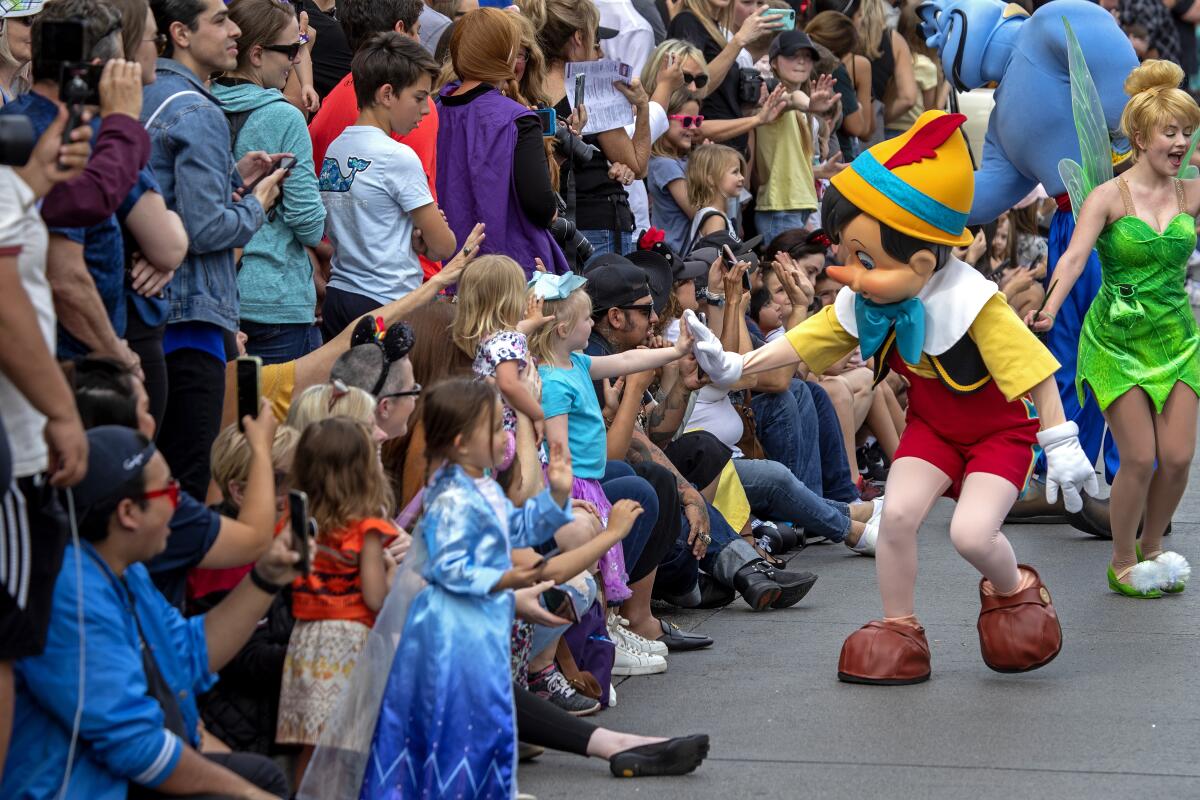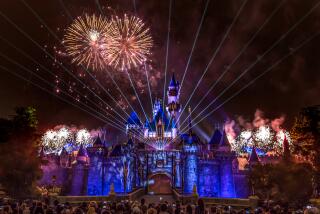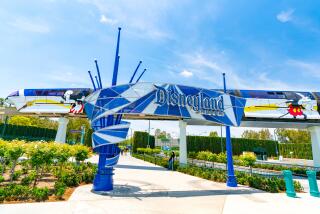Disneyland killed its annual pass program. Why, and what comes next?

- Share via
When the Disneyland annual pass debuted in 1984, it sold for only $65. Things were different then: Splash Mountain didn’t exist yet. Star Tours didn’t either. And the park was closed most Mondays and Tuesdays except during the summer.
In the 37 years since, the annual pass program has been expanded, modified and adjusted repeatedly, with various tiers and blocked-out days, as the attendance has soared and Walt Disney Co. has worked to continue the offering without hitting its capacity limit too often.
Then, this week, it ended. Ten months after Disneyland and the adjacent Disney California Adventure Park closed because of the still-raging COVID-19 pandemic, Disney pulled the plug on the program. Executives promise there will be alternative offerings in the future, but they haven’t yet offered details.
After the pandemic has eased enough for the Anaheim parks to reopen, theme park experts predict, the pass program will return in some form, with a fresh overhaul to address the park’s stubborn crowding problem and to maximize profit.
What will happen to people who had annual passes?
People who paid for annual passes that lasted beyond the parks’ closure in March are to receive automatic refunds for the days the parks were shut. Holders of passes that were active after the parks closed will continue to receive food and beverage discounts at the Downtown Disney restaurant and shopping district adjacent to the Anaheim parks and at California Adventure’s Buena Vista Street.
In addition, current passholders will get a 30% discount on select merchandise from certain stores on Mondays through Thursdays through Feb. 25.
Why would Disney end the program?
Although Disney does not release attendance figures, a report by the engineering firm AECOM estimates that in 2019, Disneyland and Disney California Adventure Park had a combined total of 28.4 million visitors. The number of people who hold annual passes has long been believed to hover around 1 million.
The annual pass program was likely profitable, but passholders have tended to be Southern California residents who visit frequently — as often as weekly or even daily — and spend less per visit on food and souvenirs than tourists do.
Disneyland and Disney California Adventure Park appreciate modest-spending visitors when they have not reached capacity, especially on low-demand days such as the middle of the week or in the fall after children return to school. But now that the parks have been nearing or reaching capacity on a regular basis, Disney would rather have the parks’ limited space filled by high-spending out-of-town visitors, theme park experts say.
“On a per-visit basis, the annual pass holders don’t make a lot of money for the park,” said John Gerner, a theme park expert and managing director of Leisure Business Advisors. “When they had excess capacity it made sense. Now they don’t have that capacity.”
Ending the annual pass program now lets Disney executives revamp the program to boost profits, he said.
For Disney, Gerner said, “it is possible that this is a blessing in disguise.”
Will the annual pass program’s replacement offer options for budget-minded Disney fans?
To cut down on crowding, Disney adopted a new pricing policy at Disneyland and other U.S. theme parks in 2016 that reduced the prices of tickets for low-demand days and raised them for more popular times. Known as dynamic pricing, such systems had already been in use at venues such as movie theaters and sports arenas.
Three years later, the Disneyland Resort introduced the Flex Pass, a lower-cost annual pass that let parkgoers visit with no restrictions on most Mondays through Thursdays, when demand is usually low. But on most weekends and during the high-demand summer months, Flex Pass holders would have to make reservations before showing up at the parks.
Theme park experts predict Disney’s future programs will continue to rely on dynamic pricing to offer an incentive for locals to visit on slow days, thus spreading the crowds more evenly throughout the year.
“Whether we want it or not, dynamic pricing is coming to the industry,” said Dennis Speigel, chief executive of International Theme Park Services.
When announcing the end of the annual pass program, Disneyland Resort President Ken Potrock hinted that the replacement would offer a variety of price levels.
“I think we’re going to look at all those different — I’ll use a marketing term — ‘buckets’ of consumers, understanding what they want and build a program around it so that we can effectively spread the attendance in a way that allows us to optimize what we have available, and satisfy the largest number of people in the way they want to be satisfied,” he said.
Will the replacement program be more expensive?
The Disneyland annual pass program had six options. The highest tier: A $2,199 pass that offered access to the Disney parks in Anaheim and in Orlando, Fla., without blocking any dates.
Industry experts predict Disney will relaunch the annual pass program with even more options to try to cater to as many fans as possible, including those who are willing to pay top dollar for maximum flexibility.
Martin Lewison, a professor of business management at Farmingdale State College in New York, noted that the Disney parks have been raising prices regularly for several years without seeing attendance numbers diminish. That suggests they can charge even higher prices without losing demand, he said.
“When you are raising prices and demand is not falling, that means you are leaving money on the table,” he said.
Once the pandemic is under control, he said, demand will be extremely high, giving Disney a green light to charge much more.
“Because people aren’t traveling, the vacation piggy bank is swelling up, and Disney wants to take its share of the piggy bank,” Lewison said.
Potrock said the shape of the replacement program will be guided by suggestions from guests, annual pass holders and fans, among others.
“That guidance is going to help us create a program for the future. And that’s a big deal,” he said. “We’re relying on a current program created with our new normal in mind.”
How soon might Disney launch the replacement program?
When Disneyland and Disney California Adventure Park reopen depends on the ability of Orange County residents to slow the spread of the coronavirus and on the speed of vaccine distribution.
But even after COVID-19 vaccinations have been widely distributed and the virus case numbers diminish, the theme parks probably won’t launch an annual pass program right away, industry experts expect. That’s because single-day tickets generate more revenue per visit and help the parks control how many people enter.
If demand for the parks remains high after the pandemic is quelled, Disney is likely to take advantage of that surge by putting off the launch of an annual pass program as long as possible, Gerner said: “My gut feeling would be that even next year is probably questionable.”
More to Read
Inside the business of entertainment
The Wide Shot brings you news, analysis and insights on everything from streaming wars to production — and what it all means for the future.
You may occasionally receive promotional content from the Los Angeles Times.












